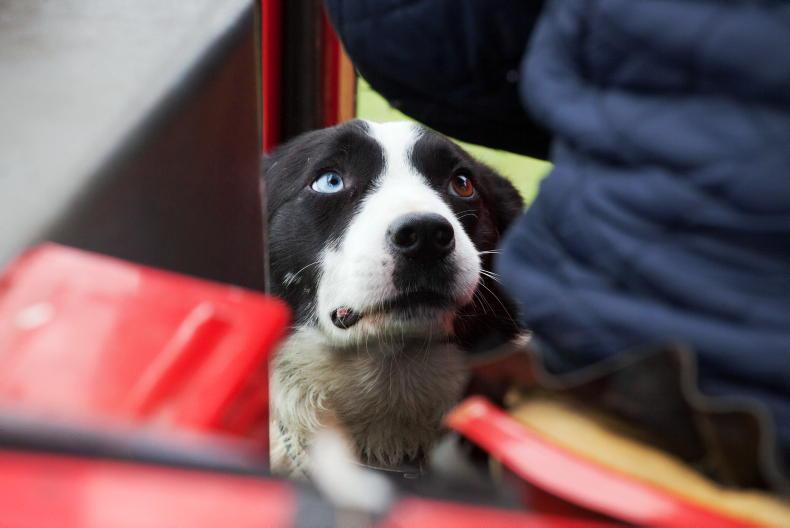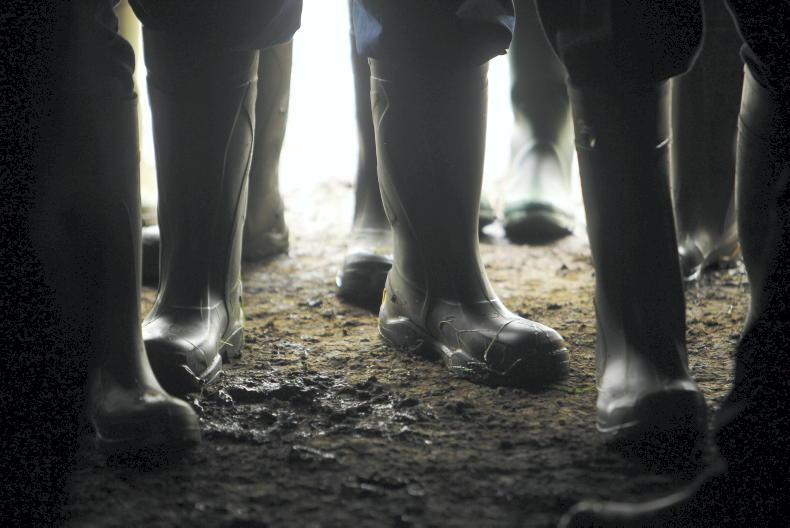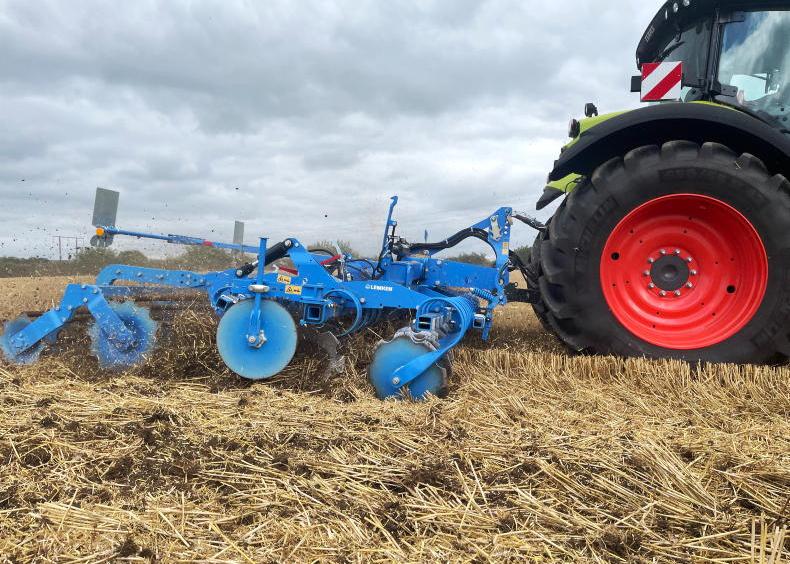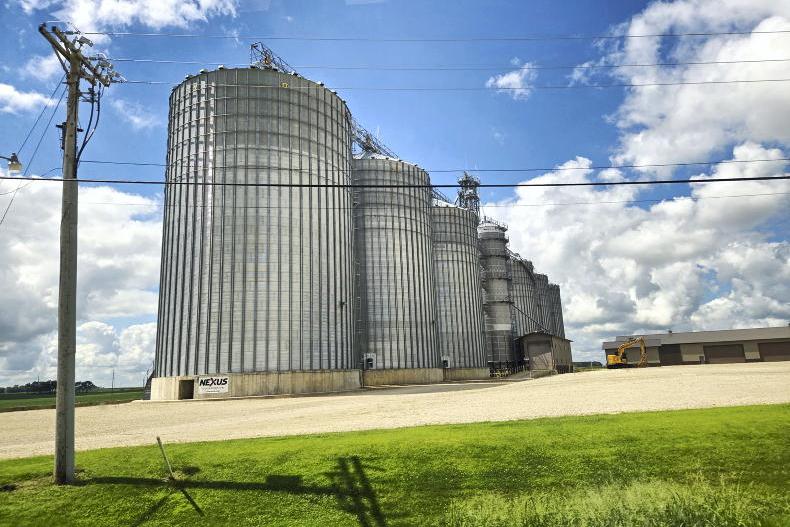The massively successful Straw Incorporation Measure may be suspended this year. The Minister for Agriculture Charlie McConalogue has cited low fodder supplies as the main reason for this.
However, it is unclear how this would be the case given the huge amount of flexibility in the scheme, which allows farmers to pull parcels if there is demand for straw.
If livestock farmers want straw, they can order straw and parcels can be taken out of the scheme.
The main reason for the decline in straw output is not the Straw Incorporation Measure (SIM), but the decline in tillage area – and with that, the massive decline in cereal area and winter cropping.
This is at a time when the Government has a target to increase tillage area by 52,000ha to 400,000ha.
The Department and minister have been describing tillage area as steady, when it is declining. This year winter cereal area is back by approximately 16,000ha. Multiply that by 12 and that’s 192,000 4X4 bales.
Yields are also poor, so there are a lot more bales missing from the system due to weather. The total area of wheat, barley and oats is down about 7,400ha, with lower yields from spring cereals.
Let’s remember the majority of the straw in the scheme is considered low-value. A huge proportion of this straw is made up of oilseed and oat straw.
Suspending the SIM will not do anything good for straw supplies in the long run. It is only adding further issues to tillage farmers’ finances in a difficult year.
Remember, tillage farmers based planting and resowing decisions on the fact that the SIM provided an insurance payment for those crops. The Department said parcels would be eligible for the scheme with bare patches which did not establish.
How does the SIM work?
Farmers apply to chop their straw on the BISS application.Farmers chop the area of straw. Whole parcels have to be chopped.If a farmer applied to chop 10ha and a field is 12ha, then the whole field must be chopped.The chopped straw needs to be incorporated as soon as possible after harvest.If a farmer is approached by a livestock farmer to sell straw, then parcels can be pulled out of the scheme.All fields are subject to inspection.The Department states on its website that you should be notified in June if your application is successful.Payment rates – €250/ha for cereals and €150/ha for oilseed rape.Minimum area for entry – 5ha.Maximum area to be applied for – 40ha.Applications 2023
Budget – €10m (increased to €12.3m to facilitate all applications).Total area applied for – 70,600ha.Cereal area – 56,700ha.Oilseed rape area – 13,900ha.Number of applications – 3,440.Some of this area was taken out after the BISS application if the farmer no longer wanted to chop the straw.The Irish Farmers Journal queried the Department of Agriculture on 27 June on the area applied for in the SIM this year, but did not receive an answer.How was the SIM helping to meet climate targets?
The decision to potentially suspend the scheme really shows a lack of respect for the Climate Action Plan. The budget for the Straw Incorporation Measure came about because incorporating straw back into the ground results in carbon being put into the soil. So, carbon is taken from the atmosphere by the crop, the straw is chopped, incorporated back into the ground and carbon is stored there. Targets for straw incorporation under the Government’s Climate Action Plan were actually increased this year. The target had been to incorporate 35,000ha of straw by 2025. The 2024 plan outlined a new target to incorporate 60,000ha by 2025. The Department does not seem to be concerned with these targets, which aim for 85,000ha of cereal straw to be chopped by 2030.
Food Vision report
The Food Vision Tillage Report compiled by a group formed at the request of the Minister for Agriculture stated under action three of that report, that the Straw Incorporation budget needs to be optimised. It did not say to suspend the scheme.
The massively successful Straw Incorporation Measure may be suspended this year. The Minister for Agriculture Charlie McConalogue has cited low fodder supplies as the main reason for this.
However, it is unclear how this would be the case given the huge amount of flexibility in the scheme, which allows farmers to pull parcels if there is demand for straw.
If livestock farmers want straw, they can order straw and parcels can be taken out of the scheme.
The main reason for the decline in straw output is not the Straw Incorporation Measure (SIM), but the decline in tillage area – and with that, the massive decline in cereal area and winter cropping.
This is at a time when the Government has a target to increase tillage area by 52,000ha to 400,000ha.
The Department and minister have been describing tillage area as steady, when it is declining. This year winter cereal area is back by approximately 16,000ha. Multiply that by 12 and that’s 192,000 4X4 bales.
Yields are also poor, so there are a lot more bales missing from the system due to weather. The total area of wheat, barley and oats is down about 7,400ha, with lower yields from spring cereals.
Let’s remember the majority of the straw in the scheme is considered low-value. A huge proportion of this straw is made up of oilseed and oat straw.
Suspending the SIM will not do anything good for straw supplies in the long run. It is only adding further issues to tillage farmers’ finances in a difficult year.
Remember, tillage farmers based planting and resowing decisions on the fact that the SIM provided an insurance payment for those crops. The Department said parcels would be eligible for the scheme with bare patches which did not establish.
How does the SIM work?
Farmers apply to chop their straw on the BISS application.Farmers chop the area of straw. Whole parcels have to be chopped.If a farmer applied to chop 10ha and a field is 12ha, then the whole field must be chopped.The chopped straw needs to be incorporated as soon as possible after harvest.If a farmer is approached by a livestock farmer to sell straw, then parcels can be pulled out of the scheme.All fields are subject to inspection.The Department states on its website that you should be notified in June if your application is successful.Payment rates – €250/ha for cereals and €150/ha for oilseed rape.Minimum area for entry – 5ha.Maximum area to be applied for – 40ha.Applications 2023
Budget – €10m (increased to €12.3m to facilitate all applications).Total area applied for – 70,600ha.Cereal area – 56,700ha.Oilseed rape area – 13,900ha.Number of applications – 3,440.Some of this area was taken out after the BISS application if the farmer no longer wanted to chop the straw.The Irish Farmers Journal queried the Department of Agriculture on 27 June on the area applied for in the SIM this year, but did not receive an answer.How was the SIM helping to meet climate targets?
The decision to potentially suspend the scheme really shows a lack of respect for the Climate Action Plan. The budget for the Straw Incorporation Measure came about because incorporating straw back into the ground results in carbon being put into the soil. So, carbon is taken from the atmosphere by the crop, the straw is chopped, incorporated back into the ground and carbon is stored there. Targets for straw incorporation under the Government’s Climate Action Plan were actually increased this year. The target had been to incorporate 35,000ha of straw by 2025. The 2024 plan outlined a new target to incorporate 60,000ha by 2025. The Department does not seem to be concerned with these targets, which aim for 85,000ha of cereal straw to be chopped by 2030.
Food Vision report
The Food Vision Tillage Report compiled by a group formed at the request of the Minister for Agriculture stated under action three of that report, that the Straw Incorporation budget needs to be optimised. It did not say to suspend the scheme.









SHARING OPTIONS